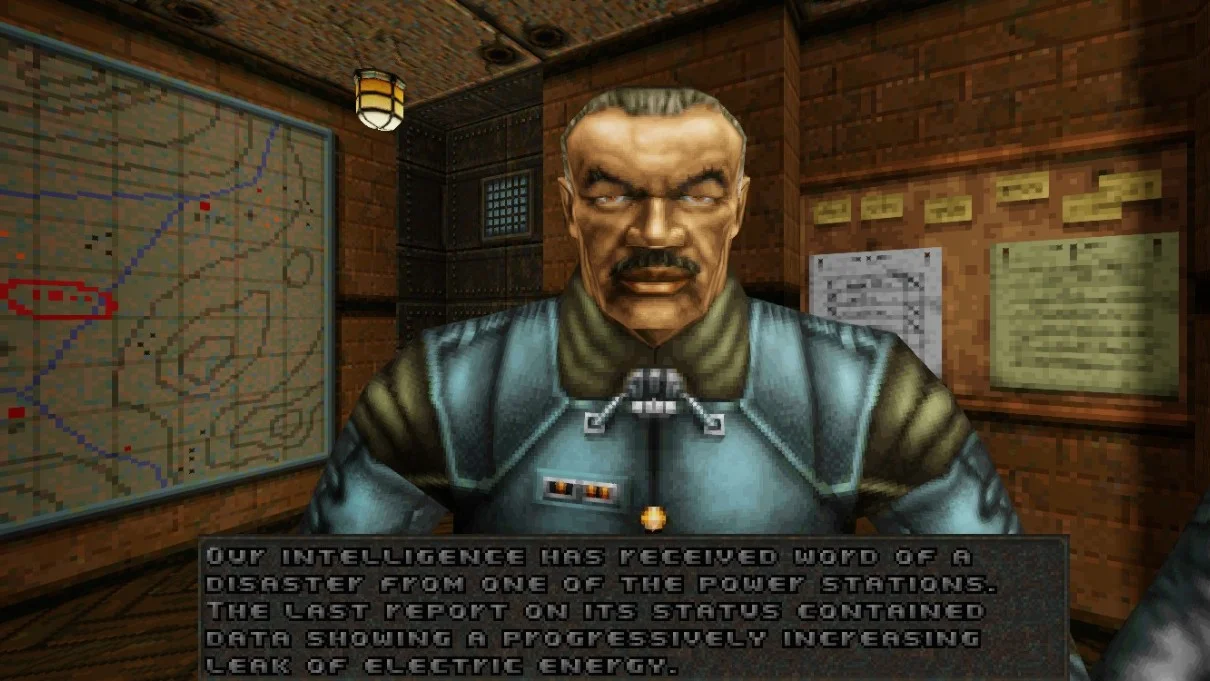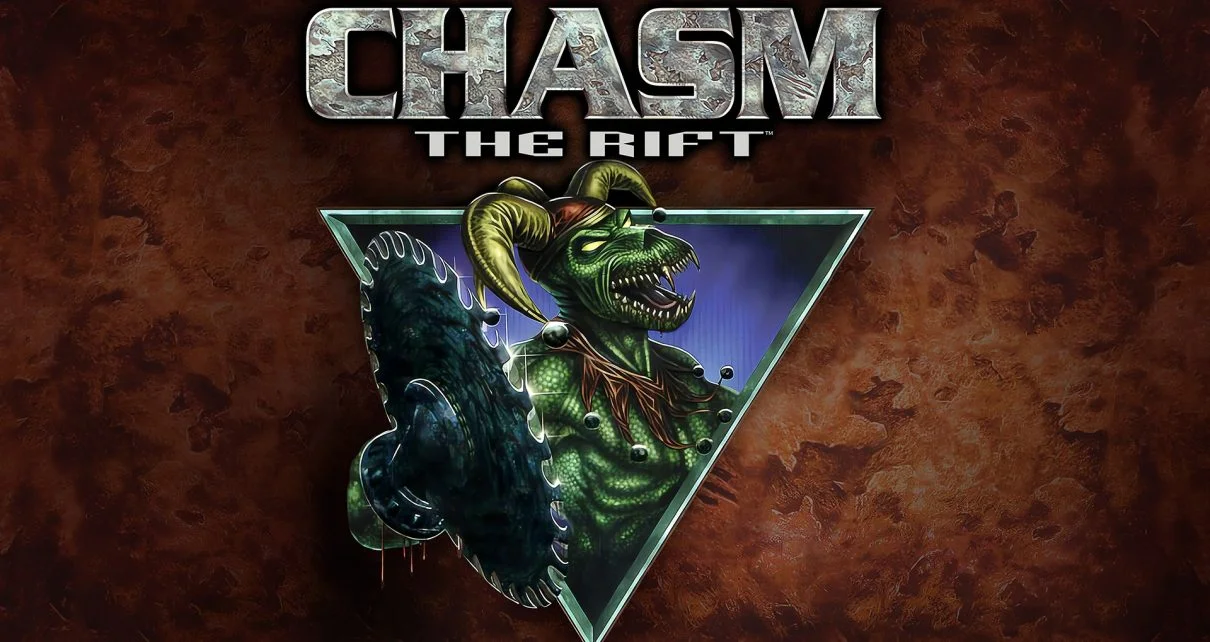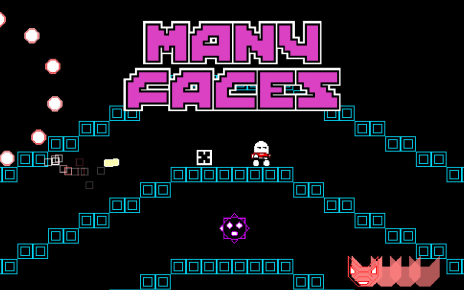Chasm: The Rift was a first-person shooter released in 1997. This was one year after the genre re-defining Quake and a year before another ‘little-known’ title called Half-Life. Over the years, the game has developed somewhat of a cult following. General Arcade and SNEG have brought the game back to life with a remaster, giving gamers another chance to see why this game has garnered such a fanbase.

Killing Time
Chasm: The Rift puts you in the worn boots of a soldier who is tasked with the job of traveling time to put an end to the pesky “Timestrikers”. These are your enemies, who with the nifty use of time travel have managed to conquer earth in record time. There isn’t a whole lot more to the story than that. Your character never gets named and you only get cutscenes at the start of the game and when you finish a section of the game.
As I previously mentioned, this game predates Half-Life which made more engaging story-telling in the FPS more commonplace. Up until that happened, this was the standard. You had an excuse to destroy everything in your sight and the occasional “briefing” or wall of text.

Strikingly Janky
Chasm: The Rift was developed by Action Forms and was initially designed as somewhat of a Quake competitor. Money and publishing changed hands and the game came out a year later. Why am I telling you this? Because context is definitely key when it comes to this game and some of its quirks and caveats.
Chasm: The Rift is a first-person shooter from the era when the genre was still quite “unexplored” and everyone either affectionately or insultingly called everything a “Doom Clone”. If you’re not familiar, this means that the game mainly boils down to shooting enemies, pressing switches, and finding key cards to unlock the exit. This all takes place in maze-like levels which grow in size as the campaign goes on.
The first “quirk” I would like to talk about when it comes to this game is the engine it runs on. Despite being a Quake competitor, it runs on its own engine rather than the “Quake Engine”. The issue here is that while “The Quake Engine” was putting out fully 3D gameplay, despite how the game looks, Chasm: The Rift is actually 2.5D. As such, it doesn’t have the sense of scale or movement that its main competitor allowed.
The fact the game isn’t fully 3D is almost apparent from the get-go. Your character feels quite clunky when interacting with the world. Jumping is particularly bad, as you can rarely scale much of anything, and there is a section very early on the in-game which requires you to jump and it was quite finicky to actually achieve.
It is quite impressive that the developers actually managed to pull off a pseudo-3D feel to the game. Unfortunately, it isn’t long until those cracks start to show in the game and make you miss the vertical scale that others around the time allowed.

No Fun, Spud Gun
The weapons in Chasm: The Rift aren’t the most fun to use. There certainly isn’t anything I would say here quite as iconic as the “Super Shotgun” from Doom either. Your ‘handgun’ weapon is a shotgun that manages to make Doom 3’s look like an absolute powerhouse. You’ve got chainguns, a laser crossbow, blades you can fire, a grenade launcher; the usual suspects. Sadly none of them really have any oomph to them. It makes the combat feel almost chore-like at times with just how spongey the enemies can be.
While on the subject of combat, I’d like to talk about this title’s most irritating habit. The game’s attempt to appear 2D while actually being 2.5D has a painful knock-on effect on how battles happen. Rather than giant arenas, Chasm: The Rift likes you to fight in the tightest of corridors. Dodging anything is a pain, and if anything actually gets close enough to you to start throwing fists, you might as well load an older save and learn from your past mistakes.
Enemies can be hit-stunned into not attacking, but this doesn’t seem to work well in closer encounters and they have some really strange hitboxes in relation to this. Coupled with the fact the engine can’t handle models on top of models, this means that often you’ll be in for a rough time. On top of this, the game is absolutely riddled with “Monster closets”. If you’re not familiar with the term, anytime you walk into a room, press a switch, or pick something up, you’re almost guaranteed to have activated an enemy or several behind you.

Maze for Days
The general stage flow has you running around, flicking switches to unlock doors, getting lost, fighting spongy enemies, and trying to find keys to eventually find the exit. Wash rinse and repeat, this is the experience through the game’s 16 stages. The developers have also included an add-on that includes another 3 stages, should you have the itch to fully destroy the “Timestriker” threat.
It’s not all negative. Chasm: The Rift does have its charm when it’s not dropping instant deathtraps on you or forcing you down narrow corridors to fight. The fact the game is set over several time-periods allows for some unique enemy types to fight and some interesting stages. It lets you explore exotic stages set in Egypt and some less so like the Power Station in modern times, or the drab-looking Medieval England.
The game bosses are also a stand-out, unlike the usual circle strafe and win-style bullet sponges. Instead, each boss has a puzzle attached to it and you can’t kill them unless you crack it. There’s nothing too brain-scratchingly difficult, but it does wake you up after falling into the routine of the game.
The game also does provide you with some vintage FPS thrills. If you’re a fan of titles like Doom and the original Quake, it does offer a somewhat “unique” take on them, at least with the settings. It uses a similar time-leap concept as Daikatana did before that sadly became a thing. Just note that this isn’t a replacement and lands firmly more into the “curiosity” section of the genre rather than a must-play game.

2 Point 5 Deez!
So I’ve touched on the visual style somewhat, but I’d like to direct you to something that was actually quite unique for its time. It’s actually something that Chasm: The Rift did much better than the games it is often compared to; the 3D character models for the enemies are actually fairly detailed and at times actually stomp out the competition.
You can disarm or decapitate any enemy in the game. While I found this happened mostly despite where I was aiming, this was something that hadn’t yet been in the genre and looks quite well done. Along with the visual effect being quite “out there” for its time, it also had the added bonus that if you shot an enemy’s weapon arm off they couldn’t attack.
There are glimpses of brilliance within the level design, such as a village in the Medieval section of the game which includes the standard tavern to knock back a few ales before more war. Unfortunately, it’s mostly just glimpses of greatness and the game tends to boil down to rather bland-looking areas with poor-looking textures throughout.
Every enemy has a unique combat sound and you can usually predict what attack it’s going to use, but if I have to hear the scream from the zombies one more time I’ll happily play the game on silent. It was near consistent at some points and beyond grating. Sadly, the weapons don’t have a punch to them aurally either and the soundtrack isn’t something I even had a second thought about. This left the presentation solely leaning on the level art and the character models.

Verdict
I’m happy I got to play Chasm: The Rift. The fact this version is playable out of the box, includes all the content, and even comes with a DOSBOX version of the game, does help you get all the bang out of your buck for this one. As I mentioned it’s certainly a curious title, and you can see very early on why it was called a “Poor Mans Quake”, but the charm of the different levels and the character models do a lot to help carry it further than just being distinctly average.
I wouldn’t recommend you jump onto Chasm: The Rift like it’s an essential purchase. It’s something to soak up a few hours, without expecting something completely revolutionary. It’s more of an rather irritating, yet charming title, with a little splash of something extra at times. Rifts may be a side effect of Quakes, but this one doesn’t leave any lasting damage.
WAIT FOR SALE ON CHASM: THE RIFT

If you would like to see more FPS games, you may be interested in our review of Cultic.
Many thanks go to SNEG for a PC review code for this title.
Pride of utopia & greatest thing ever, I found the One Piece, Collected the Dragon Balls & won the Mortal Kombat Tournament in one night, it was quiet for me that night! Follow me on Twitter @powahdunk




